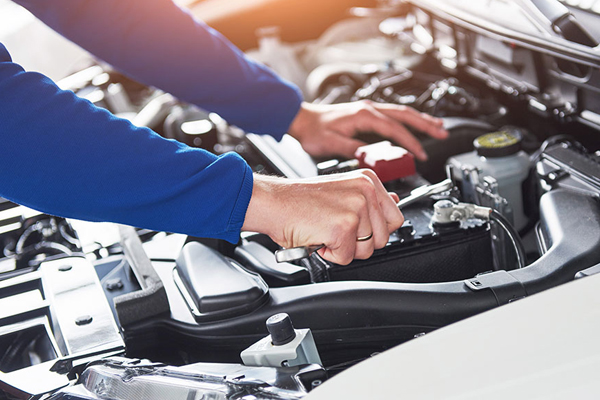All Categories
Featured
Your vehicle's suspension system plays an important role in providing a steady and smooth trip, ensuring that you maintain control on numerous terrains. It soaks up roadway shocks, supports the vehicle's weight, and keeps tires touching the road. Appropriate maintenance of this intricate system is critical for safety and performance. Comply with these steps to guarantee your shock absorber stays in optimum condition.
![]()
Leaking Fluid: Shocks or struts might leakage oil when they're used. Damaged Springs: A sagging or unequal position could show a damaged spring. Worn Bushings or Round Joints: Fractures, rips, or uncommon motion during operation suggest wear. Rust or Corrosion: With time, steel components might corrode, leading to weakened elements. Attend to any kind of issues promptly by consulting a specialist technician.
![]()
Feathery Tread: Indicates bad alignment. Bald Edges: Suggests used shocks or struts triggering too much bouncing. Revolve your tires on a regular basis and keep the proper tire stress to lower stress on the shock absorber. 3. Replace Shocks and Struts When Required. Struts and shocks are essential to your suspension's efficiency. Indicators they require changing include:
A bouncy or rough trip. Nose-diving when braking. When turning, extreme body roll. Replacing these elements at the recommended intervals (every 50,000 to 100,000 miles, depending upon driving conditions) can bring back ride top quality and handling.
Stay clear of driving over fractures, curbs, and rate bumps at broadband. Take edges carefully to avoid excessive lateral pressures. Reduce down on harsh roads to minimize deterioration. 6. Schedule Routine Alignments. Wheel placement makes sure that your tires and suspension work harmoniously. Misaligned wheels can trigger guiding issues, irregular tire wear, and extra tension on suspension components. Set up a positioning check each year or after hitting a significant crater.
![]()
Final thought. A properly maintained shock absorber improves driving comfort, improves safety and security, and expands the life of your automobile. By remaining positive with inspections, dealing with concerns without delay, and driving sensibly, you can preserve this critical system for several years to find. Purchase proper suspension upkeep today, and appreciate a much safer, smoother experience on every trip.

- Evaluate Suspension Components Consistently. Regular visual inspections can help recognize potential issues early. Seek the adhering to signs:
Leaking Fluid: Shocks or struts might leakage oil when they're used. Damaged Springs: A sagging or unequal position could show a damaged spring. Worn Bushings or Round Joints: Fractures, rips, or uncommon motion during operation suggest wear. Rust or Corrosion: With time, steel components might corrode, leading to weakened elements. Attend to any kind of issues promptly by consulting a specialist technician.

- Screen Tire Wear. Unequal tire wear typically points to suspension troubles. :
Feathery Tread: Indicates bad alignment. Bald Edges: Suggests used shocks or struts triggering too much bouncing. Revolve your tires on a regular basis and keep the proper tire stress to lower stress on the shock absorber. 3. Replace Shocks and Struts When Required. Struts and shocks are essential to your suspension's efficiency. Indicators they require changing include:
A bouncy or rough trip. Nose-diving when braking. When turning, extreme body roll. Replacing these elements at the recommended intervals (every 50,000 to 100,000 miles, depending upon driving conditions) can bring back ride top quality and handling.
- Avoid Overloading Your Vehicle. Straining your cars and truck puts unneeded stress and anxiety on the shock absorber. Surpassing your vehicle's weight capacity can bring about early wear and minimized performance. Always examine your proprietor's handbook for the maximum lots restriction and pack appropriately.
- Be Mindful of Your Driving Routines. Driving behaviors significantly impact the wellness of your suspension system. To decrease pressure:
Stay clear of driving over fractures, curbs, and rate bumps at broadband. Take edges carefully to avoid excessive lateral pressures. Reduce down on harsh roads to minimize deterioration. 6. Schedule Routine Alignments. Wheel placement makes sure that your tires and suspension work harmoniously. Misaligned wheels can trigger guiding issues, irregular tire wear, and extra tension on suspension components. Set up a positioning check each year or after hitting a significant crater.
- Oil Relocating Components. Some suspension components, like sphere joints and bushings, gain from occasional lubrication. This decreases rubbing, decreases wear, and expands their life-span. Check your owner's handbook or consult your mechanic for specific lubrication suggestions.
- Prioritize Regular Specialist Evaluations. While DIY upkeep aids, specialist evaluations are important for identifying hidden problems. Experts can evaluate hard-to-spot problems like used control arms or concealed structural damage. Regular inspections additionally provide peace of mind, making certain all parts are functioning appropriately.

Final thought. A properly maintained shock absorber improves driving comfort, improves safety and security, and expands the life of your automobile. By remaining positive with inspections, dealing with concerns without delay, and driving sensibly, you can preserve this critical system for several years to find. Purchase proper suspension upkeep today, and appreciate a much safer, smoother experience on every trip.
Latest Posts
Find Brake Repair & More: Full Repair Options from Montclare Auto Repair
Published May 27, 25
1 min read
Reasons Routine Vehicle Maintenance at Montclare Auto Repair Reduces Costs
Published May 27, 25
1 min read
Discover Oil Changes & More: Full Auto Care Solutions from Montclare Auto Repair
Published May 26, 25
1 min read
More
Latest Posts
Find Brake Repair & More: Full Repair Options from Montclare Auto Repair
Published May 27, 25
1 min read
Reasons Routine Vehicle Maintenance at Montclare Auto Repair Reduces Costs
Published May 27, 25
1 min read
Discover Oil Changes & More: Full Auto Care Solutions from Montclare Auto Repair
Published May 26, 25
1 min read